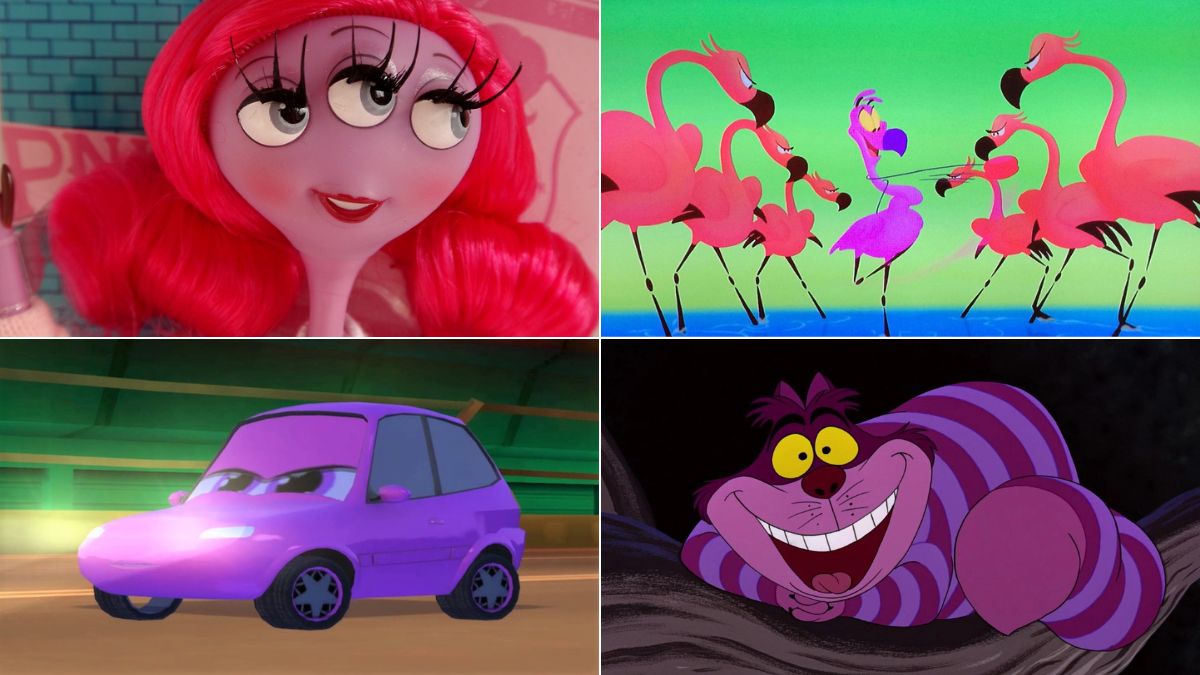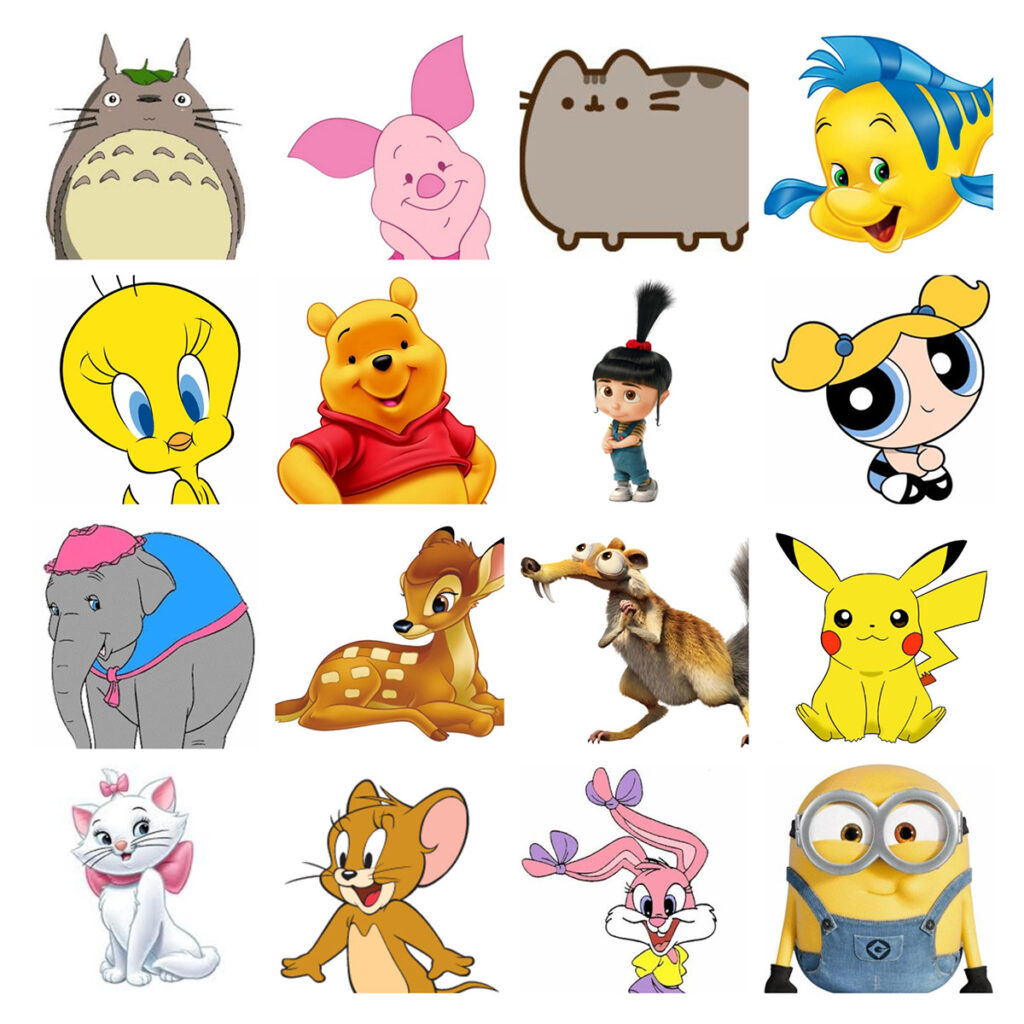Hot pink characters have taken the entertainment world by storm, bringing a vibrant and daring energy that captivates audiences everywhere. These characters aren’t just visually striking; they represent empowerment, individuality, and creativity. In this article, we’ll dive deep into the world of hot pink characters, exploring their origins, significance, and why they resonate so strongly with fans across the globe.
Imagine walking through a sea of grayscale, where suddenly a burst of hot pink catches your eye. That’s exactly what these characters do in the world of animation and pop culture. They stand out, they demand attention, and they leave a lasting impression. Whether it’s in cartoons, video games, or movies, hot pink characters bring a unique flair that’s hard to ignore.
But why hot pink? Why has this bold hue become such a powerful symbol in storytelling? As we explore this topic, you’ll discover how hot pink characters go beyond aesthetics—they embody themes of confidence, rebellion, and self-expression. So buckle up, because we’re about to embark on a colorful journey!
Read also:Deep Meaningful Tattoos A Journey Of Ink Art And Soul
What Makes Hot Pink Characters So Iconic?
There’s something undeniably magnetic about hot pink characters. It’s not just the color itself but the way it interacts with the personality and design of these characters. Hot pink is bold, unapologetic, and often associated with strength and independence. When combined with well-developed personalities, these characters become unforgettable.
Why Hot Pink Stands Out
Hot pink isn’t just another color in the palette; it’s a statement. In the world of animation, where colors play a crucial role in character design, hot pink characters often represent a break from tradition. They challenge norms and embrace individuality. Here are some reasons why hot pink stands out:
- Visual Impact: Hot pink grabs attention instantly, making characters more memorable.
- Symbolism: The color often represents passion, confidence, and empowerment.
- Contrast: When paired with other colors, hot pink creates dynamic and visually appealing designs.
Take, for example, characters like Harley Quinn from DC Comics or Poison Ivy from Batman. Both characters use hot pink as a key element in their design, reinforcing their rebellious and fearless personalities.
The Evolution of Hot Pink in Animation
Hot pink hasn’t always been a staple in character design. Over the years, its use has evolved, reflecting changing societal attitudes and cultural shifts. What started as a color associated with femininity and playfulness has transformed into a symbol of empowerment and diversity.
From Playful to Powerful
In the early days of animation, hot pink was often used to depict playful or girly characters. Think of characters like Strawberry Shortcake or My Little Pony. However, as audiences grew more sophisticated, so did the portrayal of hot pink characters. Today, you’ll find hot pink used in characters that embody strength, resilience, and complexity.
For instance, in modern animated series, hot pink characters often serve as protagonists or key supporting characters, breaking away from traditional gender roles. This shift reflects a broader trend in media to celebrate diversity and inclusivity.
Read also:African Tribal Back Tattoo A Celebration Of Heritage And Identity
Top Hot Pink Characters in Pop Culture
Let’s take a closer look at some of the most iconic hot pink characters in pop culture. These characters have left an indelible mark on fans and continue to inspire new generations.
Jessie from Toy Story
Jessie, the cowgirl from Pixar’s Toy Story franchise, is a prime example of a hot pink character done right. Her vibrant outfit and confident demeanor make her a fan favorite. Jessie’s story arc, which explores themes of loneliness and acceptance, adds depth to her character, making her more than just a colorful addition to the cast.
Harley Quinn from DC Comics
Harley Quinn’s hot pink and black outfit has become iconic in the world of comics and animation. Her character represents chaos, humor, and empowerment, making her a beloved figure in the DC universe. Harley’s journey from sidekick to leading lady showcases the evolution of hot pink characters in media.
Why Hot Pink Characters Matter
Hot pink characters matter because they challenge stereotypes and inspire creativity. In a world where representation matters, these characters provide young viewers with role models who embrace their uniqueness. They teach us that it’s okay to be bold, to stand out, and to celebrate who we are.
Representation and Inclusivity
For many fans, seeing a hot pink character on screen is more than just entertainment—it’s validation. These characters represent a diverse range of identities and experiences, offering something for everyone. Whether it’s a young girl seeing herself reflected in a confident cartoon character or an adult finding inspiration in a strong, independent role model, hot pink characters have the power to make a difference.
The Psychology Behind Hot Pink
Why does hot pink evoke such strong emotions? The psychology behind color plays a significant role in how we perceive and connect with characters. Hot pink is often associated with passion, excitement, and energy. It’s a color that demands attention and evokes a sense of urgency.
How Hot Pink Affects Perception
Studies have shown that colors can influence mood and behavior. Hot pink, in particular, has been linked to increased energy levels and heightened emotions. This makes it an ideal choice for characters who need to convey strength, determination, and charisma.
Think about how hot pink is used in branding and marketing. Companies often use this color to grab attention and create a sense of urgency. Similarly, in character design, hot pink helps characters stand out and leave a lasting impression.
Hot Pink Characters in Video Games
Video games have embraced hot pink characters in a big way. From platformers to RPGs, these characters bring a fresh perspective to gaming. Their bold designs and dynamic personalities make them stand out in a crowded market.
Examples of Hot Pink Characters in Gaming
Here are a few examples of hot pink characters in video games:
- Ryuuko Matoi (Kill la Kill): Ryuuko’s hot pink school uniform is a symbol of rebellion and strength. Her character embodies the spirit of defiance and determination.
- Lisa (Persona 5): As a member of the Phantom Thieves, Lisa’s hot pink outfit reflects her confident and carefree personality. She’s a fan favorite for her wit and charm.
These characters not only look great but also bring depth and complexity to the games they appear in, enhancing the overall experience for players.
Hot Pink Characters in Movies
Movies have also embraced hot pink characters, using them to tell compelling stories that resonate with audiences. From animated features to live-action films, these characters have made a significant impact on the big screen.
Notable Hot Pink Characters in Film
Here are a few standout examples:
- Elle Woods (Legally Blonde): While not a traditional animated character, Elle Woods’ love for hot pink makes her a memorable figure in pop culture. Her character challenges stereotypes and celebrates individuality.
- Powerpuff Girls: The Powerpuff Girls, with their signature hot pink outfits, have become iconic in children’s entertainment. Their adventures teach valuable lessons about teamwork and friendship.
These characters prove that hot pink isn’t just for kids—it’s a color that can appeal to audiences of all ages.
Creating Your Own Hot Pink Character
Feeling inspired to create your own hot pink character? Whether you’re an artist, writer, or game developer, there’s no better time to bring your vision to life. Here are a few tips to get you started:
Design Tips for Hot Pink Characters
- Balance Colors: While hot pink is the star of the show, don’t be afraid to incorporate other colors to create balance.
- Personality Matters: A great design is nothing without a compelling personality. Think about what makes your character unique and let that shine through.
- Experiment with Styles: Hot pink can work in a variety of art styles, from cartoonish to realistic. Don’t be afraid to experiment and find what works best for your character.
Remember, the possibilities are endless when it comes to creating hot pink characters. Let your creativity run wild and see where it takes you!
The Future of Hot Pink Characters
As media continues to evolve, so too will the portrayal of hot pink characters. With increasing demand for diverse and inclusive representation, we can expect to see even more hot pink characters in the future. These characters will continue to inspire and empower audiences, proving that hot pink isn’t just a color—it’s a movement.
Trends to Watch
Here are a few trends to keep an eye on:
- Increased Diversity: Hot pink characters will likely represent a wider range of identities and experiences.
- Expanded Roles: We’ll see more hot pink characters taking on leading roles in various forms of media.
- Interactive Experiences: With the rise of virtual and augmented reality, hot pink characters may become even more immersive and interactive.
The future looks bright for hot pink characters, and we can’t wait to see what comes next!
Conclusion
In conclusion, hot pink characters have made a significant impact on the world of animation and pop culture. From their bold designs to their empowering personalities, these characters continue to captivate audiences everywhere. Whether you’re a fan of classic cartoons or modern video games, there’s something for everyone in the world of hot pink characters.
So, what can you do? Share this article with your friends, leave a comment below, and let us know your favorite hot pink character. Together, let’s celebrate the vibrant and dynamic world of hot pink characters!


